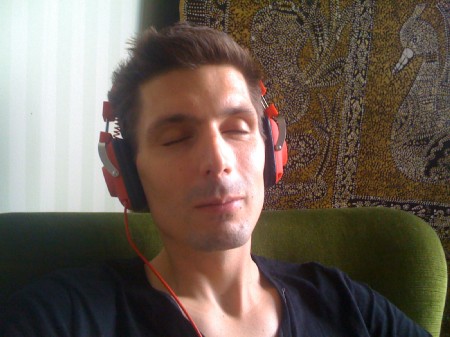Hedonic aesthetics, short version
21 januari 2011 | In academia Happiness research Hedonism Self-indulgence | Comments?Sometimes I get the awful feeling that I’m the only one left anywhere who finds any fun in life
– Aunt Augusta in Graham Greene’s novel Travels with my aunt

The quotation above is from one of my favorite novels, one about which I could write volumes (and probably would have, if another post doc suggestion of mine would have gone through. No bitterness, though. But seriously: let’s put the ”fun” back in ”funding”, what?). It is also how I like to begin certain lectures, as a response to the alleged decline of hedonism. Sometimes, in moral, aesthetic, social and whatever theory, you do get the feeling that the fun is missing, nearly banished, dismissed as to shallow, perhaps. This is a mistake, I believe. Just as in some context, it is advised that you ”follow the money” to find the culprit, when it comes to matters of value, you’re well advised to follow the pleasure.
Let’s zoom in on aesthetics. It seems quite clear that how good a piece of music or literature is, is not just a matter of what piece of music causes the greatest amount of pleasure in the greatest amount of people. If it was true ”the Da Vinci Code” would be ranked unreasonably high and Billie Holidays ”Gloomy Monday” unreasonably low. Some works of art, we say, are good not in spite of the negative emotion the stir, but because of them.
Most people understand that the questions ”What is good music” and ”What music do you like” are not the same question. The sort of music you’ll put on when submerging in a bath is not always the same sort of music you would put in a pod and send to outer space to impress alien civilizations. (Btw, you should probably also fight the temptation to send whatever is normally used in science fiction soundtracks nowadays).
But, and here comes the point with hedonic aesthetics: Even if we agree that ”What is good” and ”What do I like” are different questions, how different are they? Are the closely related, perhaps? How does what I like relate to my value judgments, and vice versa? Is there an explanatory relation, some mode of inference? Do we use our likings as evidence for aesthetic value? Perhaps we reserve the use of value to things we like that we are proud of liking, or for things we like and believe that other under suitable circumstances would like to? Perhaps it is not what they would immediately like, but what they would like eventually, on a second, third, fourth re-reading. So that value judgments are really judgments about what is worthwhile.
The motivational force of value judgments would thus stem from their hedonic, liking, component. Their ”normative” force, as it were, their recommending function, would stem from being universalized by weeding away irrelevant and temporary likings. Of course, it is open to stipulate any subgroup of values, due to which group you intend it to hold for, and what grounds are allowed as relevant.
The work cut out for hedonic aesthetics, and for hedonistic theory in general, is to demonstrate how we go from immediate, instinctive likings, via affective, associationist learning and conditioning, to the full-fledged domain of values as we know them from ordinary discourse.
Surely, there’s some fun to be found in that?